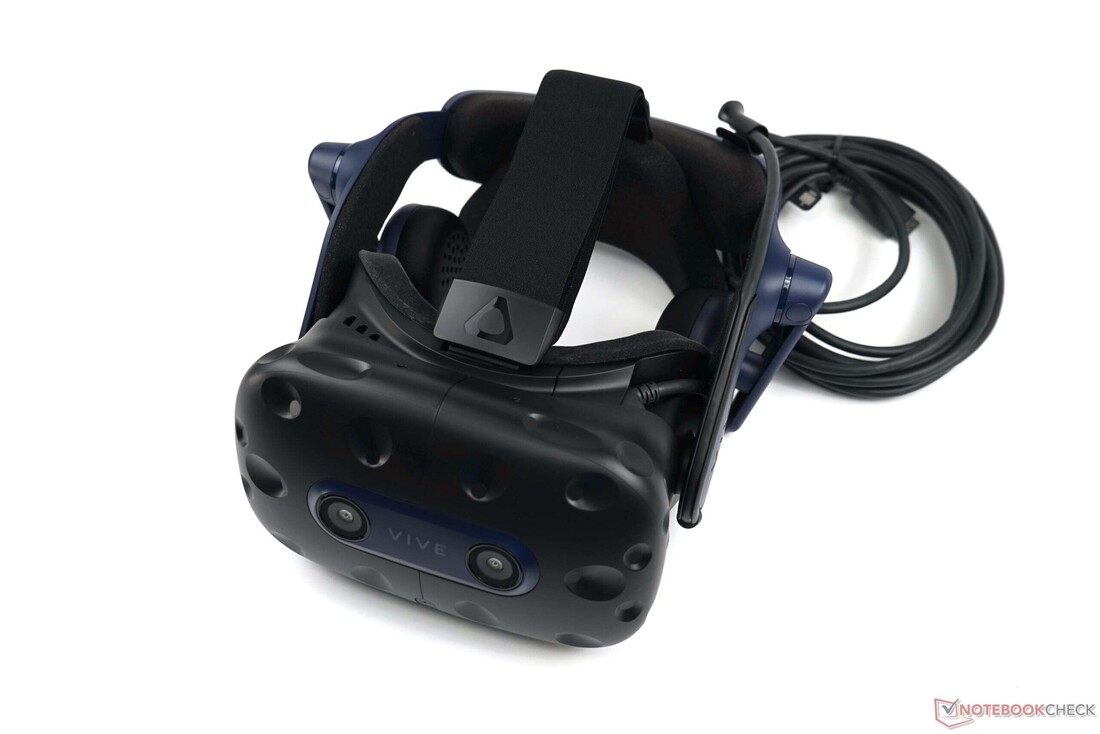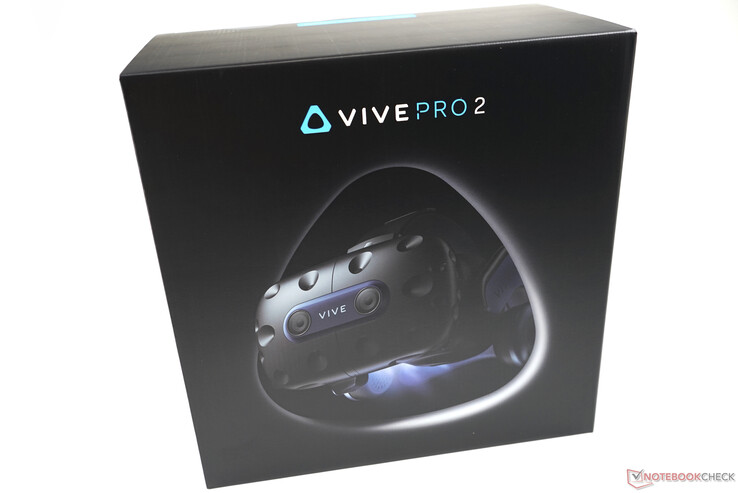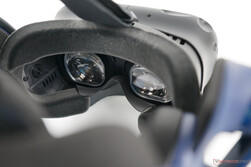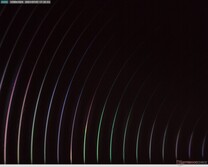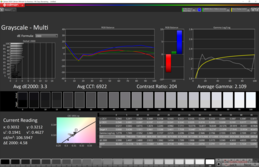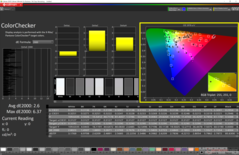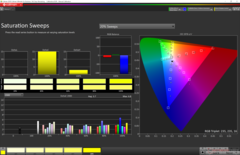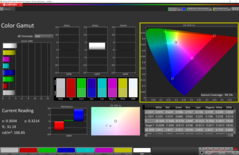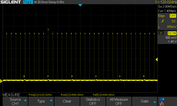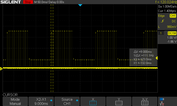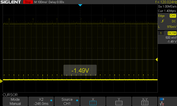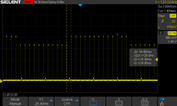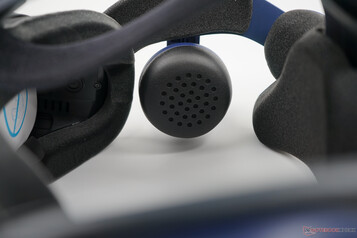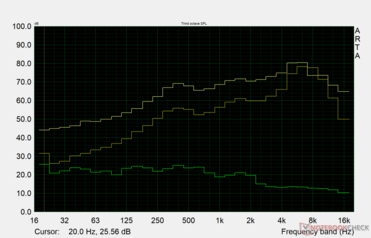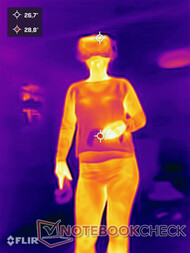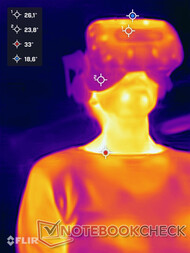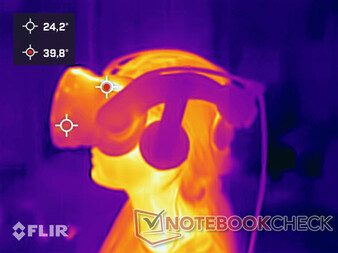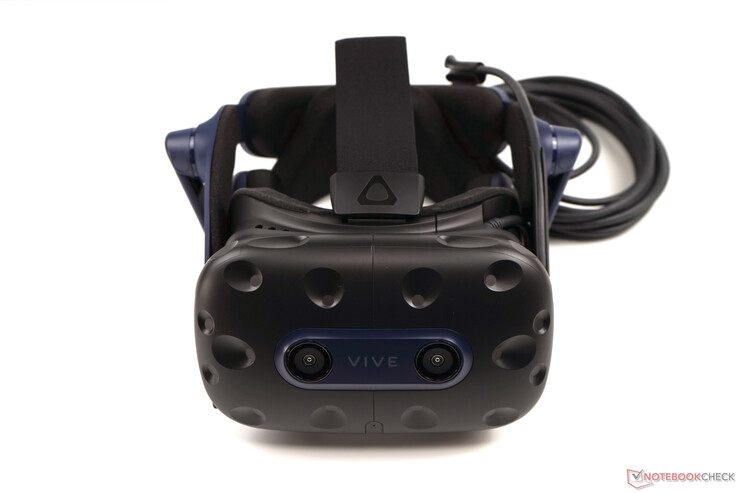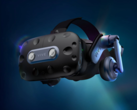HTC Vive Pro 2 Review - Perfect for Enthusiasts or just Business Customers?
HTC announces the Vive as next generation headset with next-level graphics and sound. The price is clearly targeting enthusiasts and professional users, so the main rival is HP's Reverb G2 and Valve's Index for fans. The Varjo VR-3 Headset is even more expensive.
| Headsets in comparison | HTC Vive Pro 2 | HTC Vive Pro | HP Reverb G2 | Valve Index | Oculus Quest 2 |
|---|---|---|---|---|---|
| Resolution | 4896 x 2448 | 2880 x 1600 | 4320 x 2160 | 2880 x 1600 | 3664 x 1920 |
| Panel | IPS | AMOLED | IPS | IPS | IPS |
| Max. Refresh Rate | 120 Hz | 90 Hz | 90 Hz | 144 Hz | 72 Hz |
| FOV Horizontal | 117° | 107° | 99° | 108° | 104° |
| FOV Vertical | 97° | 108° | 91° | 109° | 98° |
| Tracking | Steam VR Lighthouse | Steam VR Lighthouse | 4 Cameras 6DOF | Steam VR Lighthouse | 4 Cameras 6DOF |
| Weight | 850g | 1018g | 544g | 800g | 503g |
| List price full kit | $1400 | $1200 | $600 | $1000 | $299 |
Specifications
- 120° Field of View / horizontal viewing angle
- Two displays with 2448 x 2448 pixels (4896 x 2448 = 12 million pixels in total, vs 8.8 M pixels at 4K)
- 120 Hz (90 Hz with VIVE Wireless Adapter)
- Bluetooth, USB-C Port for headphones, for example
- Connection to PC via DisplayPort and USB 3.0 cable
- Adjustable lens distance (for the adjustment to the eye distance and glasses)
- Dual camera to show 3D image of the environment
- Integrated microphone
- Support for SteamVR Base Station 1.0 and 2.0
- 819 Euros list price (headset only)
Test System
We use our desktop PC with Intel Core i7-8086K 6-core CPU, Aorus Z370 Ultra mainboard, and Nvidia GeForce RTX 2080 Super Founders Edition as our test system.
Hardware
According to HTC, the Vive Pro 2 is designed for professional use, so this has to be considered when you choose the materials and the build quality. The plastic in use here does not leave the highest quality impression and there are also noticeable creaking sounds when we twist the headset. The durability should still be good, because Schenker Technologies, where we purchased the headset, does not report a high failure rate. The Vive Pro 2 works well for customers in professional environments.
The design did not change a lot compared to the first generation; only the front is now in a subtle black.
The cable management is good and it does not really affect the handling. You can also get the optional VIVE Wireless Adapter for wireless connection, but it currently limits the resolution (full resolution is supposed to be supported later) and the refresh rate to 90 Hz.
HTC uses SteamVR Lighthouse hardware for tracking. This costs quite a lot of money and it takes time to calibrate, but it convinces with very precise and gapless tracking.
HTC still uses their old Vive controllers. They offer good hardware, but they are very bulky and they are annoying during gaming when you reload your virtual weapon in Pavlov VR or Onward, for example. The stick design is ideal for games like Beat Saber and the weight of the controllers enhances the fitness aspect of the game.
The battery runtime is not great with the 960 mAh battery, but it is sufficient for very long sessions. You should still recharge them every couple of days via micro-USB port. The more compact Steam Index Controller (only available directly via Steam) are therefore a better alternative for some games.
Wear Comfort
The wear comfort does not cause any criticism, despite the high weight. Our testers did not have any problems even during longer sessions, but you cannot use the headrest of your chair when you use the headset in a sitting position because the Vive has a rotary knob at the rear. The included foam cushions are easy to replace for multiple users. We recommend an alternative made of synthetic leather. The original from HTC or the version from VRCover are supposed to be very good. They are easy to disinfect and clean - a must for professional usage scenarios. HTC unfortunately does not ship them with the headset.
Software
HTC uses a mixture of its own tools and Valve's SteamVR in terms of software. The combination of the two tools is very confusing at first since settings and calibration is distributed across the two systems. There are also some bugs and we occasionally had to restart the system and even encountered some blue screens (when activating and deactivating the headset). There were no problems during gaming and the setup was pretty easy as well, but there is still plenty of room for improvements.
Once you have set-up everything, the SteamVR dashboard is a good place to start Steam games or switch between titles. The stereo cameras at the front can be used to show the environment if you get to the limits of your predefined room - very handy.
There is still a very limited number of blockbuster games. Half Life: Alyx, Beat Saber, Elite: Dangerous, No Man's Sky, Pistol Whip, and Super Hot VR were the most convincing titles and are basically must-have games. Titles like Pavlov VR or Onward do not look very good and also require a good stomach. The movements via touchpad and without "beaming" like in Half Life resulted in severe nausea after 15-30 minutes. This is supposed to improve with some training and 3D shooters still make a lot of fun in VR.
Picture Quality
The displays are the biggest change compared to the Vive Pro 1. HTC now uses IPS panels with very high resolutions. Both screens have 2448 x 2448 pixels, which is sufficient to create a perfect image without screen-door effect. The blurriness and the distortions are a result of the lenses. They offer a wide field of view of up to 120 degrees, but the image is much blurrier towards the edges. However, this also depends on the user; only the central area was really sharp for our test author. Other headsets like the HP Reverb G2 are supposed to have a wider sweet spot.
The brightness is automatically adjusted via brightness sensor and PWM control. We unfortunately did not find an option to adjust it manually for our measurements, but the 110 cd/m² we recorded are sufficient in the dark headset. The black value of 0.5 cd/m² is pretty high in our measurements (with a distance of a few cm) and only results in a contrast ratio of 211:1. The AMOLED predecessor obviously had a big advantage here.
The grayscale reveals a blue cast, but it is still okay with an average DeltaE2000 deviation of 3.3 and it is not affecting the image. The ColorChecker shows a good result of 2.6 and the sRGB gamut is almost covered completely at 99.5%.
PWM might be a problem for sensitive users
HTC uses PWM at 120 Hz (at 110 cd/m² we measured) to adjust the brightness of the Vive Pro 2. The PWM flickering is very aggressive and it also affects our response times measurements. The frequency at 120 Hz will be a problem for sensitive users and can result in eyestrain and headaches.
It is hard to measure the response times, but they should not be too high for an IPS screen. The distances are not very long at 8-9 ms for switches between black to white and grey to grey, respectively.
Speakers
The two integrated speakers can be removed and HTC advertises their high quality. Compared to good notebook speakers, we notice much stronger bass, but they are not very linear. There is a noticeable peak at 5000-6000 Hz, for example. The maximum volume is still very good and you can adjust volume comfortable via buttons at the left ear piece. Our subjective impression is that the speakers are usable, but not excellent. It is also possible to attach other headphones with USB-C or Bluetooth.
Vive Pro 2, i7-8086K, Aorus Z370 Ultra, RTX 2080 Super FE audio analysis
(+) | speakers can play relatively loud (86.5 dB)
Bass 100 - 315 Hz
(±) | reduced bass - on average 10.5% lower than median
(+) | bass is linear (5.2% delta to prev. frequency)
Mids 400 - 2000 Hz
(+) | balanced mids - only 1.7% away from median
(+) | mids are linear (3.1% delta to prev. frequency)
Highs 2 - 16 kHz
(±) | higher highs - on average 6.6% higher than median
(+) | highs are linear (4.4% delta to prev. frequency)
Overall 100 - 16.000 Hz
(+) | overall sound is linear (11.8% difference to median)
Compared to same class
» 8% of all tested devices in this class were better, 2% similar, 90% worse
» The best had a delta of 4%, average was 24%, worst was 134%
Compared to all devices tested
» 8% of all tested devices were better, 2% similar, 90% worse
» The best had a delta of 4%, average was 24%, worst was 134%
Apple MacBook Air 2020 M1 Entry audio analysis
(±) | speaker loudness is average but good (79.6 dB)
Bass 100 - 315 Hz
(±) | reduced bass - on average 7.1% lower than median
(±) | linearity of bass is average (9.5% delta to prev. frequency)
Mids 400 - 2000 Hz
(+) | balanced mids - only 2.2% away from median
(+) | mids are linear (5.3% delta to prev. frequency)
Highs 2 - 16 kHz
(+) | balanced highs - only 2.3% away from median
(+) | highs are linear (4% delta to prev. frequency)
Overall 100 - 16.000 Hz
(+) | overall sound is linear (8.7% difference to median)
Compared to same class
» 3% of all tested devices in this class were better, 1% similar, 96% worse
» The best had a delta of 5%, average was 18%, worst was 53%
Compared to all devices tested
» 2% of all tested devices were better, 1% similar, 97% worse
» The best had a delta of 4%, average was 24%, worst was 134%
Emissions
Power Consumption
The HTC Vive Pro 2 is also efficient in our consumption measurements. We can only measure 0.4W at the PSU when the headset is turned off, 6.3W when it is on without content and 9.6-9.9W when in use. the two tracking stations only consume 2.4W each.
Pros
Cons
Verdict
The HTC Vive Pro 2 is a great headset, but it also has its drawbacks. The highlight is definitely the high resolution of the two panels, which result in a great picture impression in the sweet spot. The wide field of view is very comfortable, but the sweet spot can be pretty small depending on the user. This means it will quickly get blurry when your eyes move towards the edges. The color representation is decent, but the contrast is not very high and cannot keep up with the AMOLED predecessor. The biggest disadvantage is the utilization of PWM for the (automatic) brightness control. We measured flickering at 120 Hz, which can cause problems for sensitive users in longer sessions.
The highly advertised new integrated headphones cannot really meet the high expectations. Hi-Fi enthusiasts will not be satisfied, but they are completely sufficient for gaming.
The expensive Steam VR tracking via Lighthouse works perfectly and quickly as expected, but the set-up is a bit cumbersome and especially expensive.
Looking at the alternatives, we currently recommend the Oculus Quest 2 as an entry-level device for consumers. It is basically unrivaled in terms of price including stand-alone features. It is worse in terms of picture quality and tracking, but it has a low weight and wider range of software (Stand Alone). Enthusiasts get interesting alternatives with the Valve Indes (worse picture quality, same tracking) and the HP Reverb G2 (camera tracking, lightweight), which are also much more affordable.
The Vive Pro 2 convinces with high resolution, wide field of view, and great tracking, but it is expensive and the somewhat limited sweet spot. We think the Pro 2 is a good choice both for enthusiasts as well as business users.
Price and Availability
You can order the Pro 2 headset directly from VIVE for $799 (only headset) or 809$ from Amazon.




